 |
||
|
HOME
|
US Navy -
ships
|
US Navy - air
units
|
USMC - air
units
|
International
Navies
|
Weapon Systems
|
Special Reports |
||
|
US Navy - Aircraft Carrier CV 9 / CVA 9 / CVS 9 - USS Essex |
||
|
||
| 12/20 | ||
|
Type, class: Aircraft Carrier, Essex class Builder: Newport News Shipbuilding & Dry Dock Co., Newport News, Virginia, USA STATUS: Awarded: July 3, 1940 Laid down: April 28, 1941 Launched: July 31, 1942 Commissioned: December 31, 1942 (as CV 9) Decommissioned: January 9, 1947 SCB-27A conversion: February 1949 - January 1951 Recommissioned: January 15, 1951 reclassified CVA 9 on October 1, 1952 SCB-125 conversion: August 1955 - January 1956 reclassified CVS 9 on March 8, 1960 Decommissioned: June 30, 1969 Fate: scrapped in 1975 Namesake: Essex town and county, Massachusetts, USA Ships Motto: E NAVIBUS PUGNISSIMA (the greatest battle from the ships) Technical Data: see: INFO > Essex class Aircraft Carrier - CV |
||
|
Deployments - Carrier Air Groups/Wings embarked: June 1951 - March 1952 with Carrier Air Group 5 (CVG-5) - Western Pacific, Korean War June 1952 - February 1953 with Air Task Group 2 (ATG-2) - Western Pacific, Korean War December 1953 - July 1954 with Air Task Group 2 (ATG-2) - Western Pacific November 1954 - June 1955 with Carrier Air Group 2 (CVG-2) - Western Pacific July 1956 - January 1957 with Carrier Air Group 11 (CVG-11) - Western Pacific February 1958 - November 1958 with Air Task Group 201 (ATG-201) - Mediterrranean Sea, Indian Ocean, Western Pacific August 1959 - February 1960 with Carrier Air Group 10 (CVG-10) - Mediterrranean Sea September 1960 - December 1960 with Carrier Anti-Submarine Air Group 60 (CVSG-60) - Mediterrranean Sea October 1961 - February 1962 with Carrier Anti-Submarine Air Group 56 (CVSG-56) - Northern Atlantic October 1963 - December 1963 with Carrier Anti-Submarine Air Group 60 (CVSG-60) - Mediterrranean Sea June 1964 - August 1964 with Carrier Anti-Submarine Air Group 60 (CVSG-60) - Mediterrranean Sea June 1965 - September 1965 with Carrier Anti-Submarine Air Group 60 (CVSG-60) - Mediterrranean Sea May 1967 - September 1967 with Carrier Anti-Submarine Air Group 54 (CVSG-54) - Northern Atlantic, Mediterrranean Sea February 1968 - June 1968 with Carrier Anti-Submarine Air Group 60 (CVSG-60) - Mediterrranean Sea |
||
| images | ||
|
decommissioned on June 30, 1969 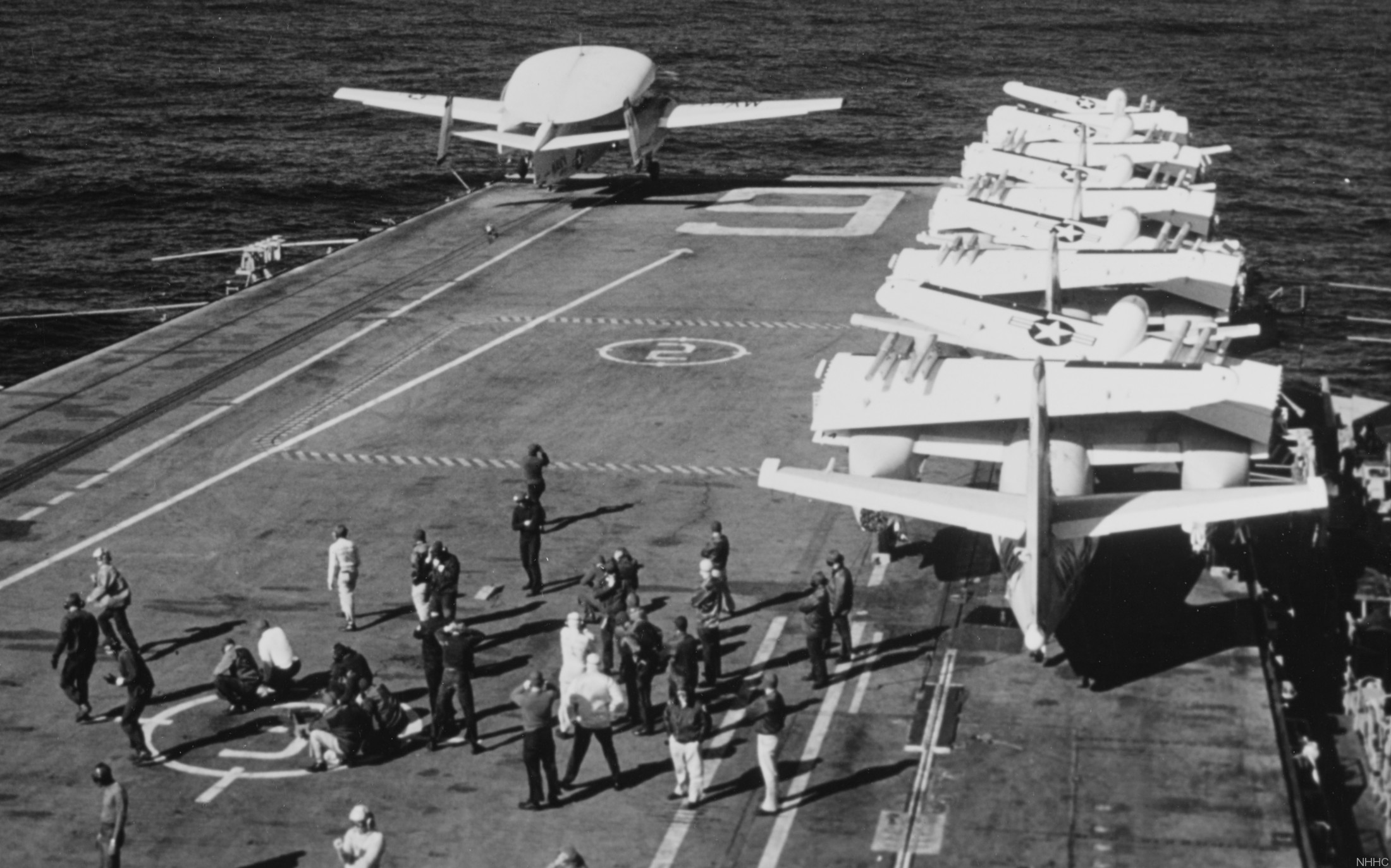 with CVSG-60 embarked - November 1967  with CVSG-54 embarked - June 1967  with CVSG-54 embarked - June 1967  Grumman S-2 Tracker launching (CVSG-54) - 1967  with CVSG-54 embarked - 1967  with CVSG-54 embarked - 1967 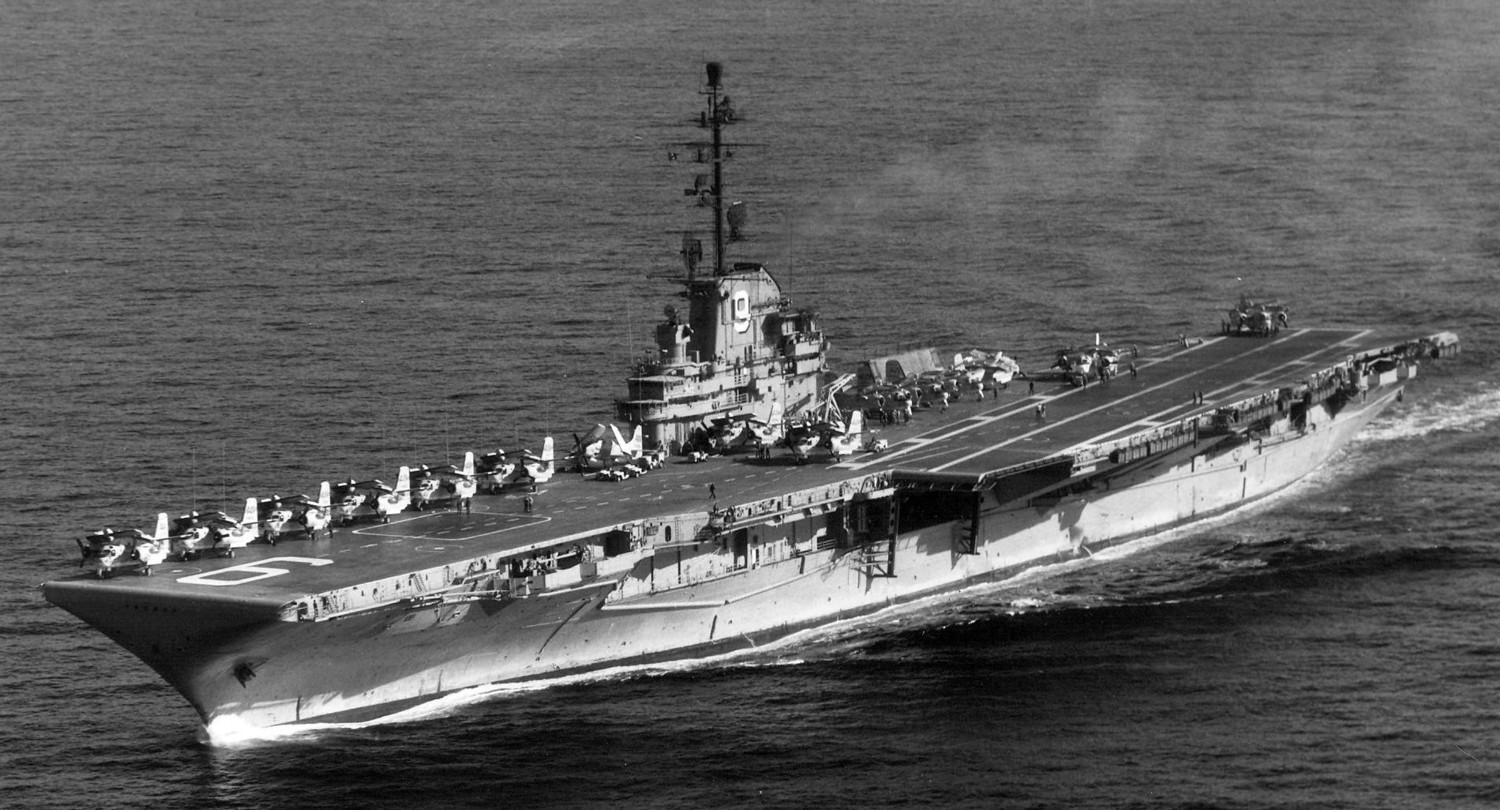 with CVSG-60 embarked - 1966 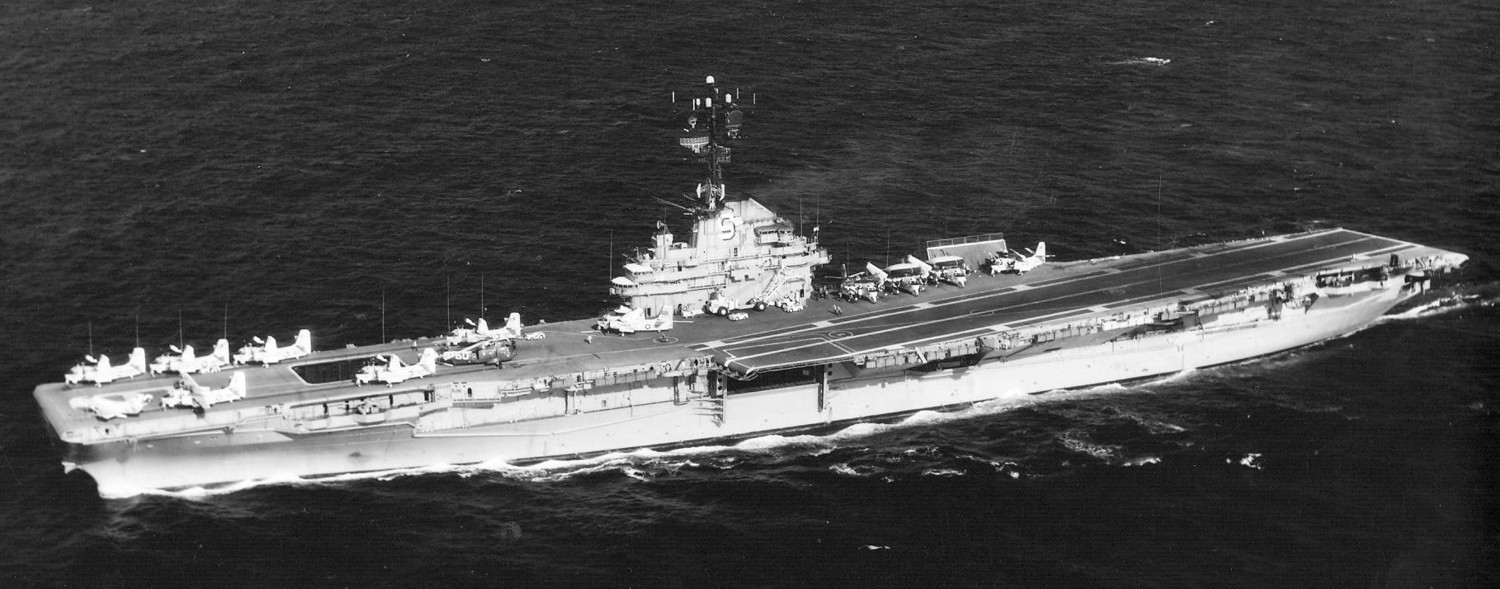 with CVSG-60 embarked - 1965  with CVSG-60 embarked - 1964  with CVSG-60 embarked - 1964 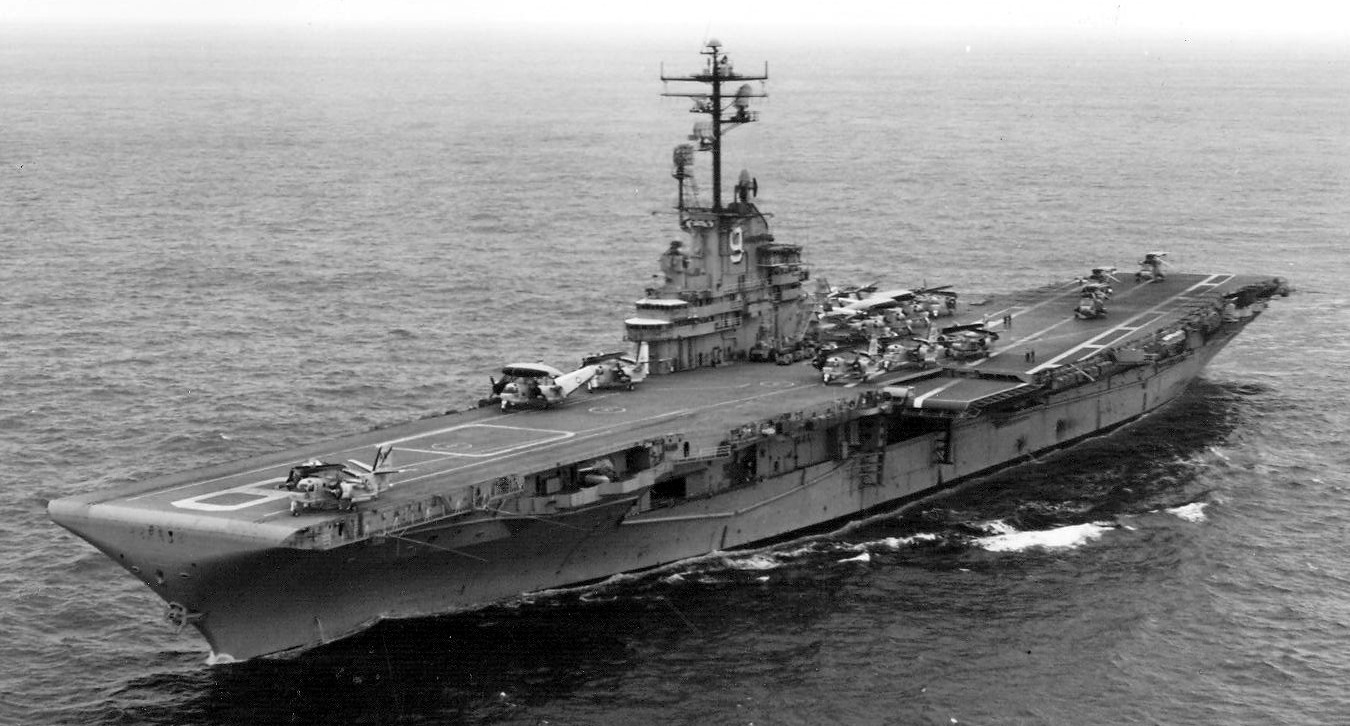 with CVSG-60 embarked - 1964  with CVSG-60 embarked - Indian Ocean - November 1963  with CVSG-60 embarked - late 1963 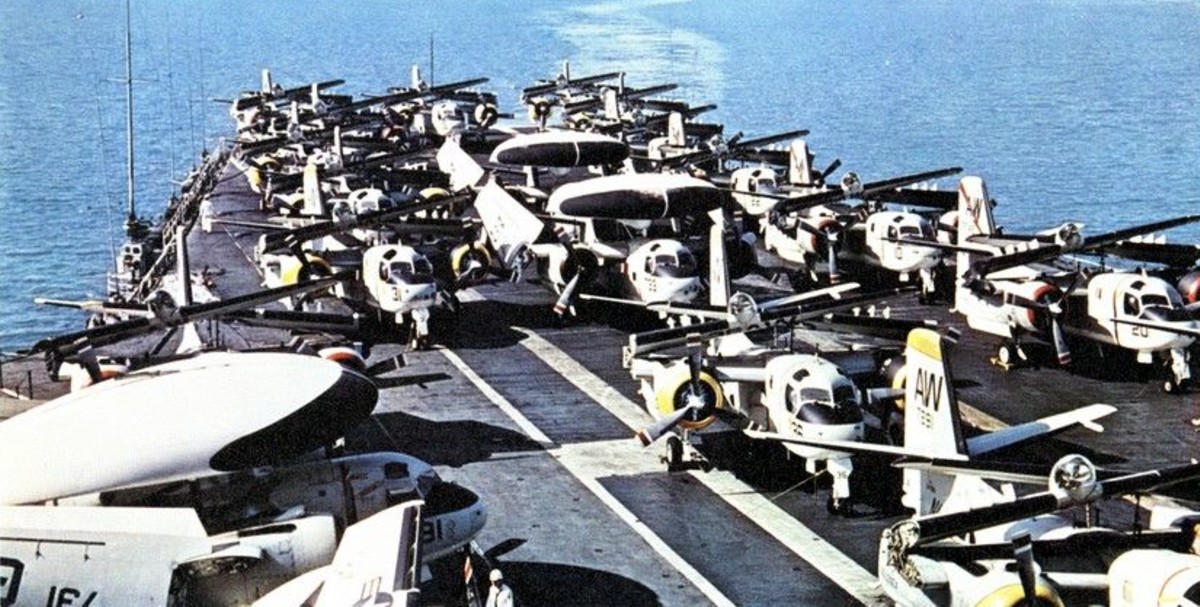 with CVSG-60 embarked - late 1963 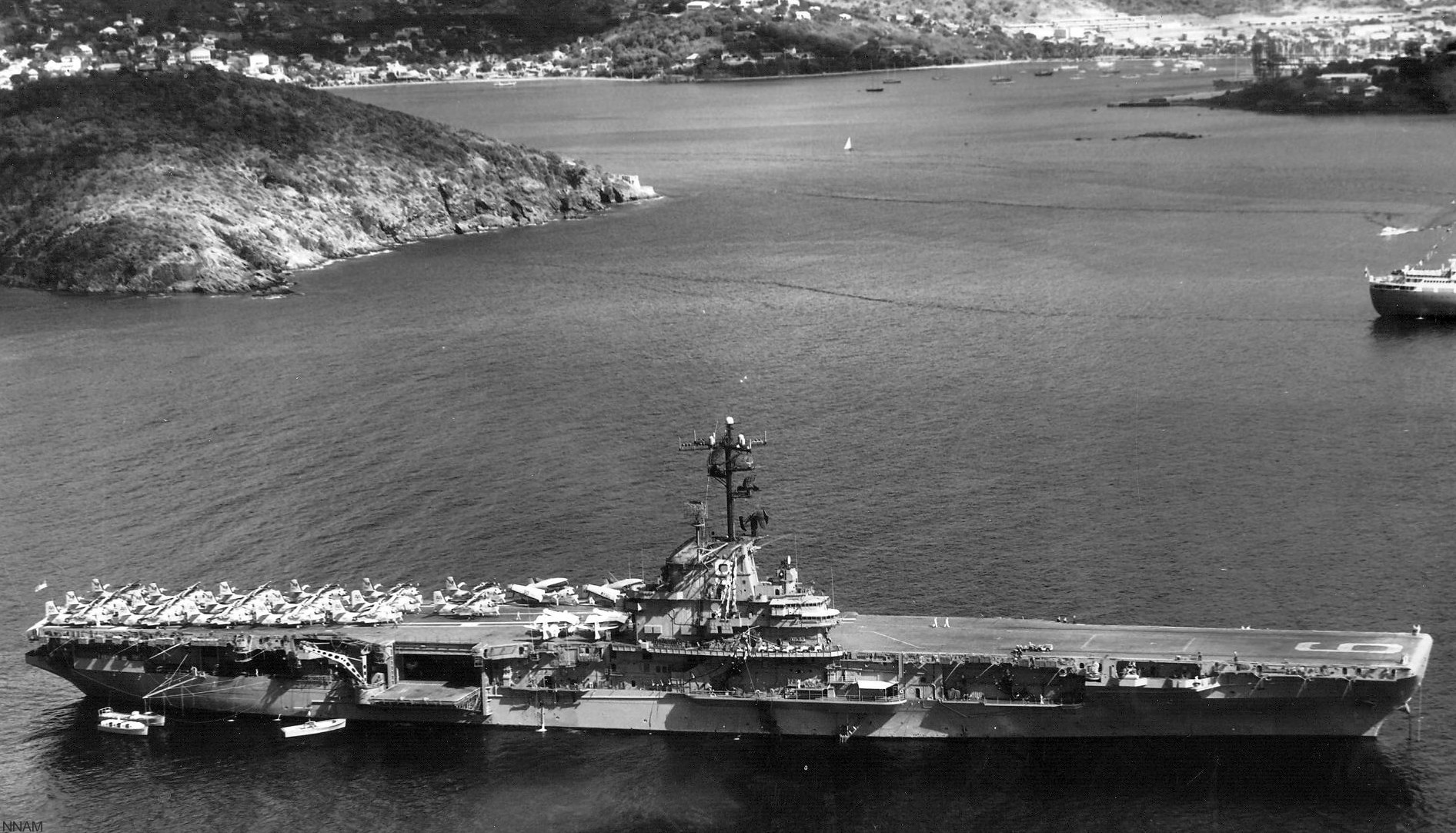 with CVSG-60 embarked - port visit to Saint Thomas, US Virgin Islands - December 1962 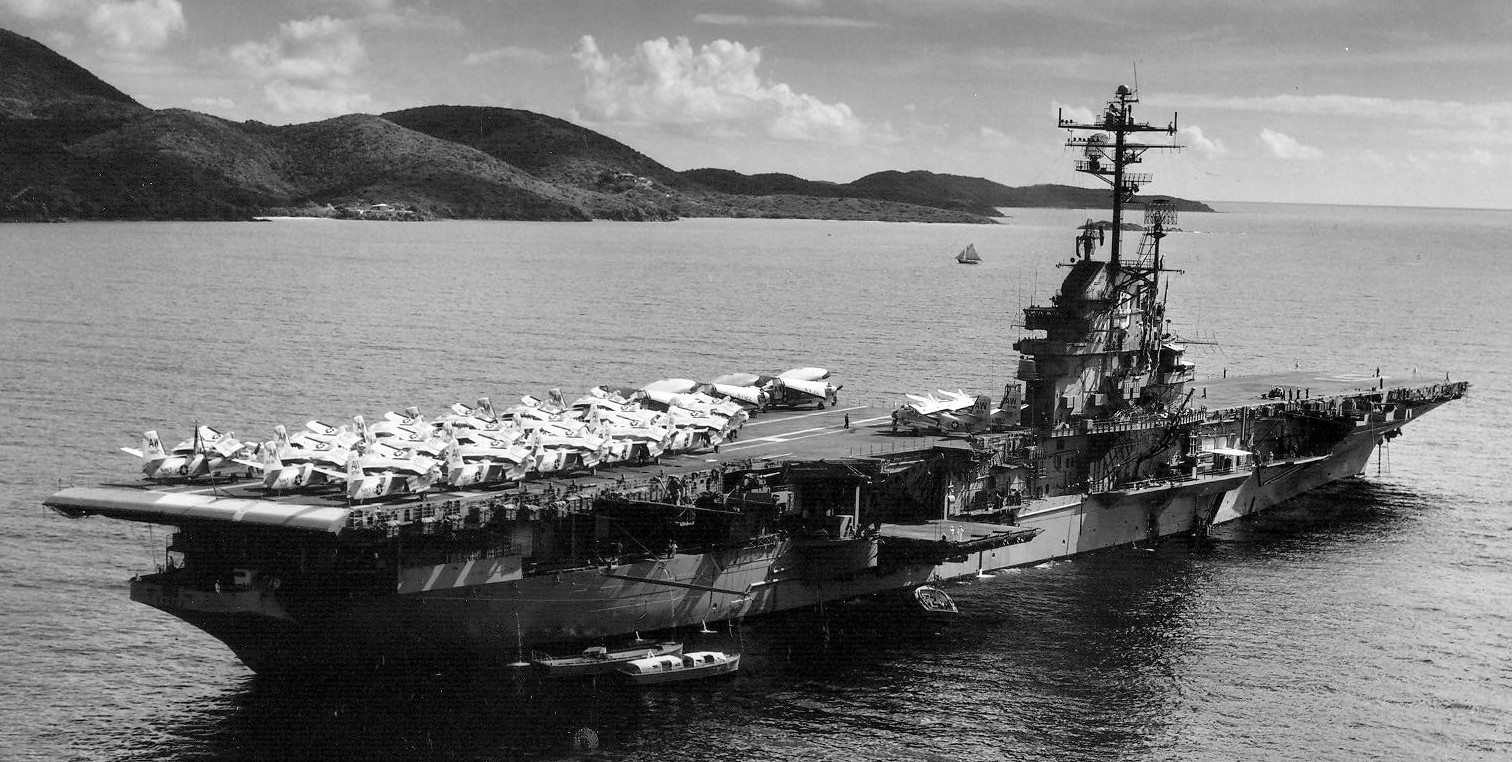 with CVSG-60 embarked - port visit to Saint Thomas, US Virgin Islands - December 1962 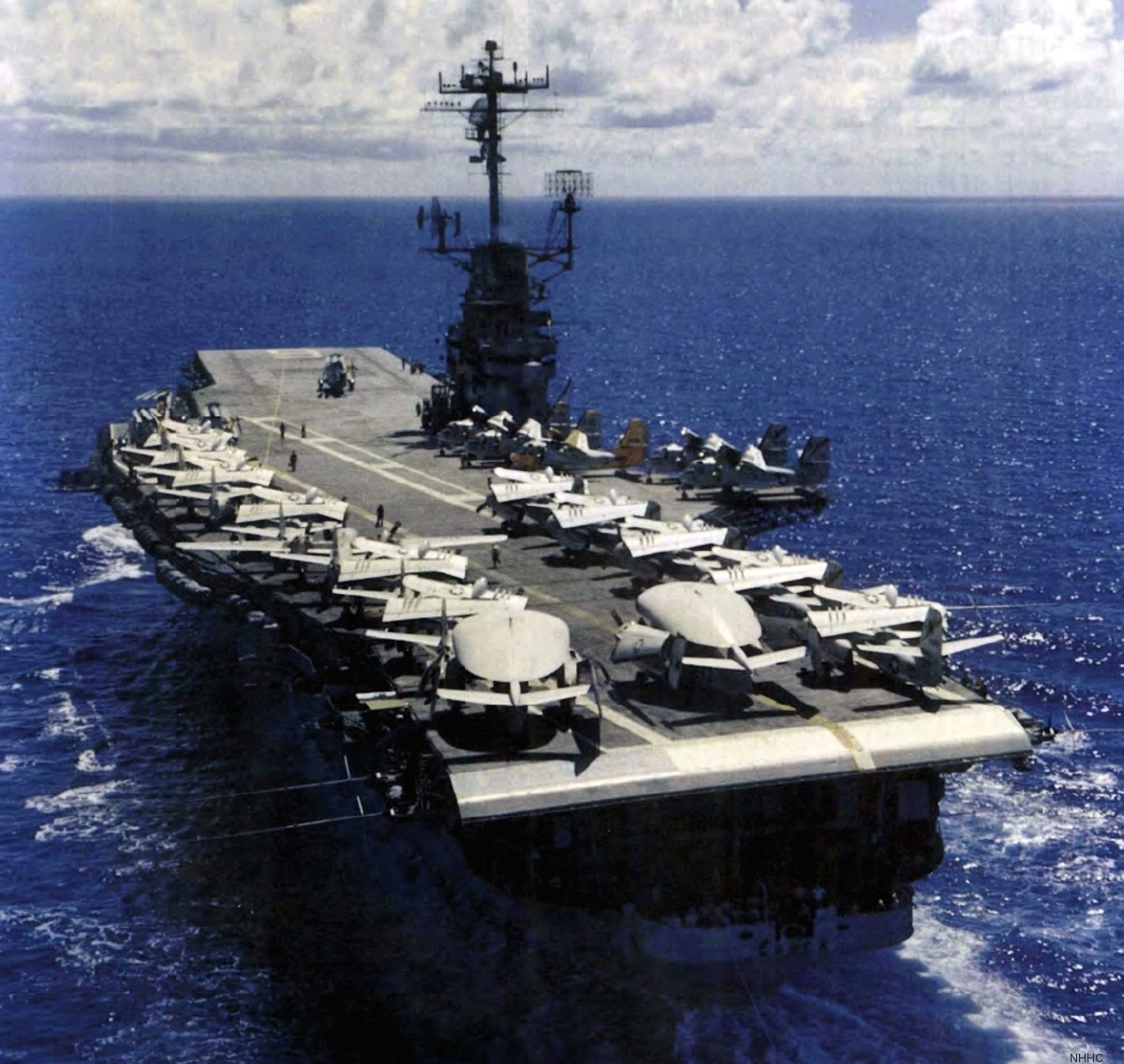 with CVSG-60 embarked - circa 1962  with CVSG-56 embarked - port visit, Hamburg, Germany (tschüss means bye) - January 1962  with CVSG-56 embarked - christmas visit, Rotterdam, The Netherlands (goede kerst means happy christmas) - December 1961  with CVSG-56 embarked - late 1961 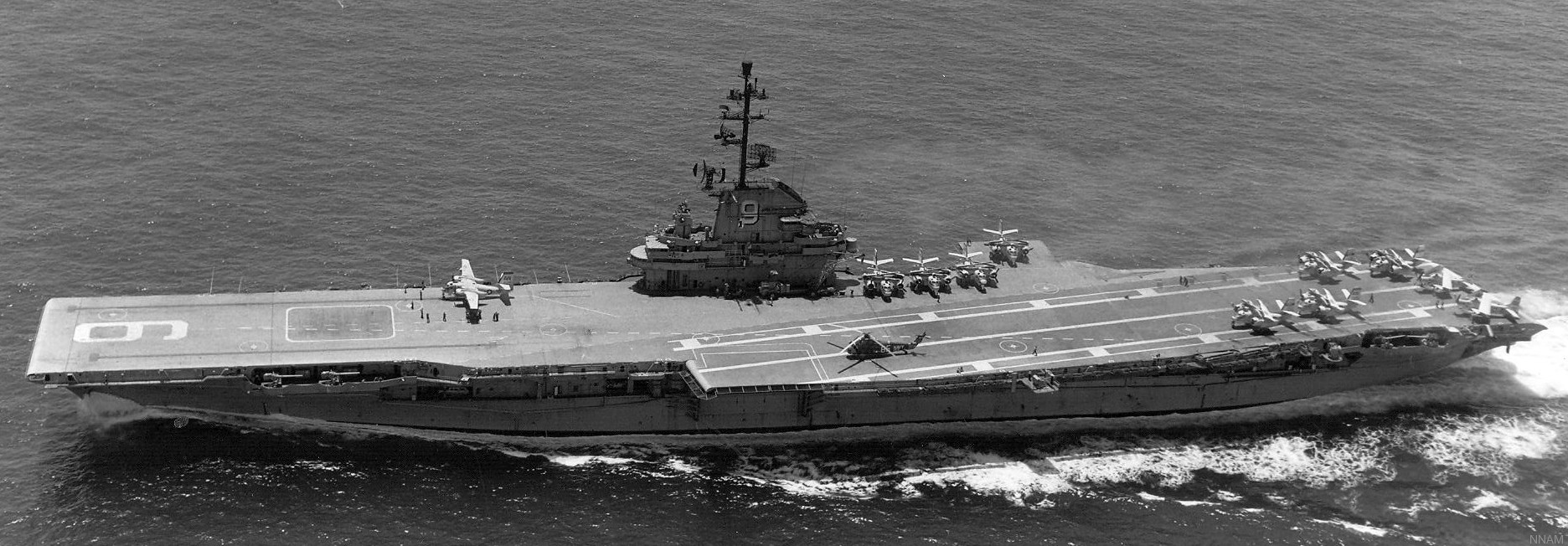 with CVSG-60 embarked - July 1961  emergency-landing barricade prepared - with CVSG-60 embarked - July 1961  1961 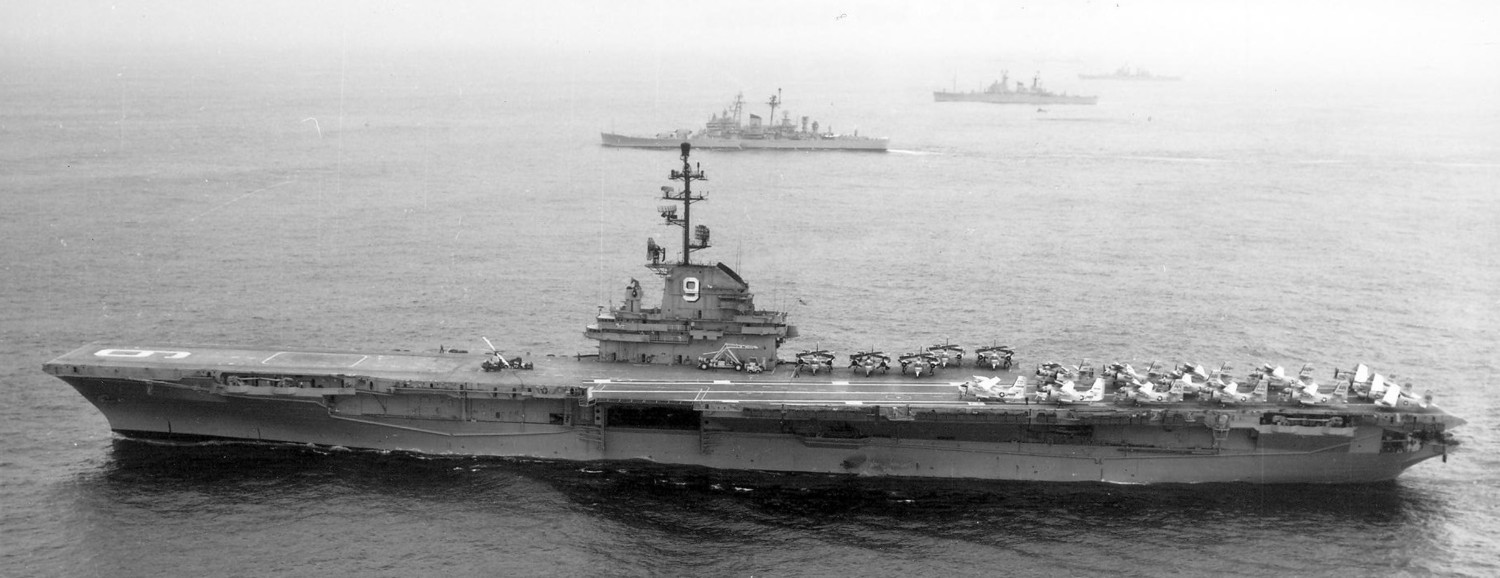 with CVSG-60 embarked - 1960 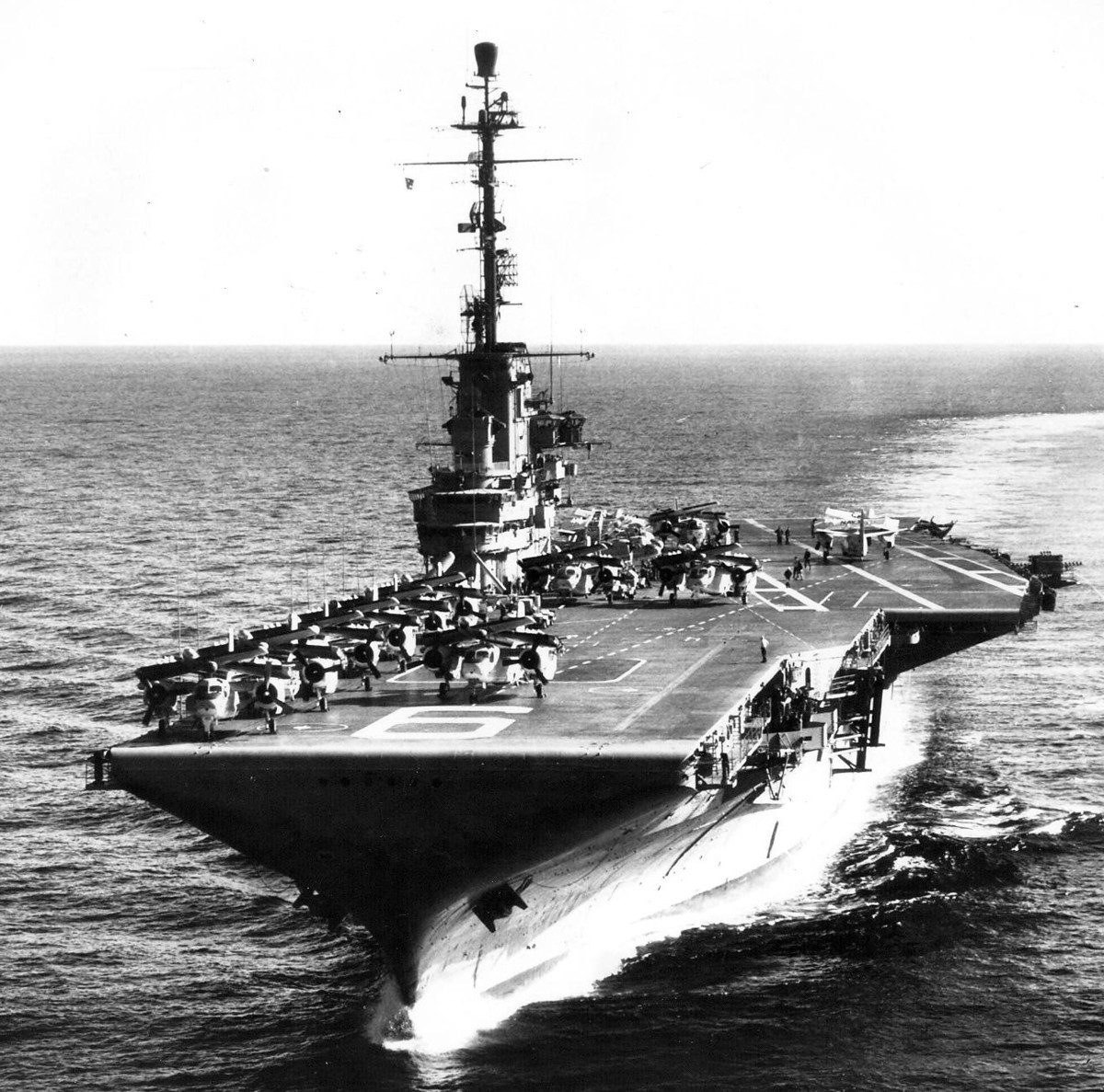 with CVSG-60 embarked - 1960  circa 1960 reclassified CVS 9 on March 8, 1960  in dry dock at New York Naval Shipyard - 1960  USS Essex (CVA 9) with CVG-10 embarked and USS Saratoga (CVA 60) with CVG-3 embarked - off Mayport, Florida - February 1960  with CVG-10 embarked - 1960  with CVG-10 embarked - 1960  with CVG-10 embarked - 1960  with CVG-10 embarked - 1960  with CVG-10 embarked - 1960  with CVG-10 embarked - 1960  with CVG-10 embarked - Mediterranean Sea - January 1960  with CVG-10 embarked - 1959  with CVG-10 embarked - 1959-60  with CVG-10 embarked - 1959-60  with CVG-10 embarked - 1959-60  with CVG-10 embarked - 1959-60  with ATG-201 embarked - Mediterranean Sea - 1958  with ATG-201 embarked - Mediterranean Sea - 1958  with ATG-201 embarked - Mediterranean Sea - 1958  1957  with CVG-11 embarked - circa 1957  with CVG-11 embarked - circa 1957  circa 1957  with CVG-11 embarked - August 1956  with CVG-11 embarked - 1956  with CVG-11 embarked - circa 1956  with CVG-11 embarked - circa 1956  after SCB-125 conversion - May 1956  after SCB-125 conversion - 1956  after SCB-125 conversion - 1956  radar and antenna details - 1956 SCB-125 conversion: August 1955 - January 1956  circa 1955  circa 1955  with CVG-2 embarked - 1955  with CVG-2 embarked - Manila Bay, Philippines - January 1955  with CVG-2 embarked - January 1955  with CVG-2 embarked - circa 1955  with CVG-2 embarked - 1954-55  with CVG-2 embarked - 1954-55  with ATG-2 embarked - 1954  with ATG-2 embarked - circa 1954  with ATG-2 embarked - circa 1954  with ATG-2 embarked - 1953 reclassified CVA 9 on October 1, 1952  returning to San Diego, California - March 1952  with CVG-5 embarked - 1951-52  with CVG-5 embarked - 1951  with CVG-5 embarked - 1951  with CVG-5 embarked - note the Sikorsky HO3S-1 helicopter - 1951  Korean War - October 1951  with CVG-5 embarked - May 1951  preparing for a Korean War deployment - San Diego, California - May 1951  underway after SCB-27A conversion - March 1951 recommissioned on January 15, 1951  during her SCB-27A modernization at Puget Sound Naval Shipyard, Bremerton, Washington - April 1949 SCB-27A conversion > February 1949 - January 1951  mothballed at Puget Sound Navy Yard, Bremerton, Washington - 1948  mothballed at Puget Sound Navy Yard, Bremerton, Washington - 1948 decommissioned on January 9, 1947  Pacific Ocean - January 1945  Japanese Kamikaze hit off Luzon, Philippines - November 1944  Japanese Kamikaze hit off Luzon, Philippines - November 1944  Japanese Kamikaze hit off Luzon, Philippines - November 1944  Japanese Kamikaze hit off Luzon, Philippines - November 1944  Pacific Ocean - May 1944  Pacific Ocean - May 1944  Pacific Ocean - May 1944  between April and November 1944 USS Essex wore the Camouflage Measure 32, Design 6/10D - Pacific Ocean - April 1944  leaving San Francisco, California - April 15, 1944  leaving San Francisco, California - April 15, 1944  Majuro Atoll, Marshall Islands - March 1944  February 1944  Pacific Ocean - August 1943  Pearl Harbor, Hawaii - August 1943  Pearl Harbor, Hawaii - August 1943  Pearl Harbor, Hawaii - August 1943  May 1943  May 1943  May 1943  March 1943  Hampton Roads, Virginia - February 1943  Hampton Roads, Virginia - February 1943 commissioned on December 31, 1942  after launching - July 31, 1942  after launching - July 31, 1942  after launching - July 31, 1942  launching ceremony at Newport News Shipbuilding, Virginia - July 31, 1942 laid down on April 28, 1941 |
||
|
Essex ... is a coastal town in Essex County, Massachusetts, 26 miles (42 km) north of Boston and 13 miles (21 km) southeast of Newburyport. It is known for its former role as a center of shipbuilding. The population was 3,504 at the 2010 census. |
||
|
USS Essex (CV 9 / CVA 9 / CVS 9): USS Essex (CV/CVA/CVS-9) was an aircraft carrier, the lead ship of the 24-ship Essex class built for the United States Navy during World War II. She was the fourth US Navy ship to bear the name. Commissioned in December 1942, Essex participated in several campaigns in the Pacific Theater of Operations, earning the Presidential Unit Citation and 13 battle stars. Decommissioned shortly after the end of the war, she was modernized and recommissioned in the early 1950s as an attack carrier (CVA), and then eventually became an antisubmarine aircraft carrier (CVS). In her second career she served mainly in the Atlantic, playing a role in the Cuban Missile Crisis. She also participated in the Korean War, earning four battle stars and the Navy Unit Commendation. She was the primary recovery carrier for the Apollo 7 space mission. She was decommissioned for the last time in 1969 and sold for scrap in 1975. Construction and Commissioning: Essex was laid down on 28 April 1941 by Newport News Shipbuilding and Dry Dock Co. After the Pearl Harbor attack her building contract (along with the same for CV-10 and CV-12) was reworked. After an accelerated construction, she was launched on 31 July 1942, sponsored by Mrs. Artemus L. Gates, the wife of the Assistant Secretary of the Navy for Air. She was commissioned on 31 December 1942 with Captain Donald B. Duncan commanding. History: World War II: Following her builders trials and shakedown cruise (both also accelerated), Essex steamed to the Pacific in May 1943 to begin a succession of victories which would bring her to Tokyo Bay. Departing from Pearl Harbor, she participated with Task Force 16 (TF 16) in carrier operations against Marcus Island (31 August 1943); was designated the flagship of TF 14 and struck Wake Island (5-6 October); participated in carrier operations during the Rabaul strike (11 November 1943), along with Bunker Hill and Princeton; launched an attack with Task Group 50.3 (TG 50.3) against the Gilbert Islands where she also took part in her first amphibious assault, the landing on Tarawa Atoll (18-23 November). Refueling at sea, she cruised as flagship of TG 50.3 to attack Kwajalein (4 December). Her second amphibious assault delivered in company with TG 58.2 was against the Marshall Islands (29 January-2 February 1944). Essex - in TG 58.2 - now joined with TG 58.1 and TG 58.3 to constitute Task Force 58 (the "Fast Carrier Task Force"), to launch an attack against Truk (17–18 February) during which eight Japanese ships were sunk. En route to the Mariana Islands to sever Japanese supply lines, the carrier force was detected and received a prolonged aerial attack which it repelled in a businesslike manner and then continued with the scheduled attack upon Saipan, Tinian and Guam (23 February). After this operation, Essex proceeded to San Francisco for her single wartime overhaul. Following her overhaul, Essex became the carrier for Air Group 15, the "Fabled Fifteen," commanded by the U.S. Navy's top ace of the war, David McCampbell. She then joined carriers Wasp and San Jacinto in TG 12.1 to strike Marcus Island (19-20 May) and Wake (23 May). She deployed with TF 58 to support the occupation of the Marianas (12 June - 10 August); sortied with TG 38.3 to lead an attack against the Palau Islands (6-8 September), and Mindanao (9-10 September) with enemy shipping as the main target, and remained in the area to support landings on Peleliu. On 2 October, she weathered a typhoon and four days later departed with Task Force 38 (TF 38) for the Ryukyus. For the remainder of 1944, she continued her frontline action, participating in strikes against Okinawa (10 October), and Formosa (12-14 October), covering the Leyte landings, taking part in the Battle for Leyte Gulf (24-25 October), and continuing the search for enemy fleet units until 30 October, when she returned to Ulithi, Caroline Islands, for replenishment. She resumed the offensive and delivered attacks on Manila and the northern Philippine Islands during November. On 25 November, for the first time in her far-ranging operations and destruction to the enemy, Essex received damage. A kamikaze hit the port edge of her flight deck landing among planes gassed for takeoff, causing extensive damage, killing 15, and wounding 44. Following quick repairs, she operated with the task force off Leyte supporting the occupation of Mindoro (14-16 December). She rode out the typhoon of 18 December and made special search for survivors afterwards. With TG 38.3, she participated in the Lingayen Gulf operations, launched strikes against Formosa, Sakishima, Okinawa, and Luzon. Entering the South China Sea in search of enemy surface forces, the task force pounded shipping and conducted strikes on Formosa, the China coast, Hainan, and Hong Kong. Essex withstood the onslaught of the third typhoon in four months (20-21 January 1945) before striking again at Formosa, Miyako-jima and Okinawa (26-27 January). For the remainder of the war, she operated with TF 58, conducting attacks against the Tokyo area (16-17, and 25 February) both to neutralize the enemy's air power before the landings on Iwo Jima and to cripple the aircraft manufacturing industry. She sent support missions against Iwo Jima and neighboring islands, but from 23 March - 28 May was employed primarily to support the conquest of Okinawa. In the closing days of the war, Essex took part in the final telling raids against the Japanese home islands (10 July - 15 August). Following the surrender, she continued defensive combat air patrols until 3 September, when she was ordered to Bremerton, Washington for inactivation. On 9 January 1947, she was placed out of commission in reserve. Modernization endowed Essex with a new flight deck, and a streamlined island superstructure on 16 January 1951, when she was recommissioned, with Captain A. W. Wheelock commanding. Korean War: After a brief cruise in Hawaiian waters, she began the first of three tours in Far Eastern waters during the Korean War. She served as flagship for Carrier Division 1 (CarDiv 1) and Task Force 77. She was the first carrier to launch F2H Banshees on combat missions; on 16 September 1951, one of these planes, damaged in combat, crashed into aircraft parked on the forward flight deck causing an explosion and fire which killed seven. After repairs at Yokosuka, she returned to frontline action on 3 October to launch strikes up to the Yalu River and provide close air support for U.N. troops. Her two deployments in the Korean War were from August 1951 - March 1952 and July 1952 - January 1953. On 1 December 1953, she started her final tour of the war, sailing in the East China Sea with what official U.S. Navy records describe as the "Peace Patrol". From November 1954 - June 1955, she engaged in training exercises, operated for three months with the United States Seventh Fleet, assisted in the Tachen Islands evacuation, and engaged in air operations and fleet maneuvers off Okinawa. Pacific Fleet: In July 1955, Essex entered Puget Sound Naval Shipyard for repairs and extensive alterations. The SCB-125 modernization program included installation of an angled flight deck and an enclosed hurricane bow, as well as relocation of the aft elevator to the starboard deck edge. Modernization completed, she rejoined the Pacific Fleet in March 1956. For the next 14 months, the carrier operated off the West Coast, except for a six-month cruise with the 7th Fleet in the Far East. Ordered to join the Atlantic Fleet for the first time in her long career, she sailed from San Diego on 21 June 1957, rounded Cape Horn, and arrived in Mayport, Florida on 1 August. Atlantic and Mediterranean: In the fall of 1957, Essex participated as an anti-submarine carrier in the NATO exercise Strikeback and in February 1958, deployed with the 6th Fleet until May, when she shifted to the eastern Mediterranean. Alerted to the Middle East crisis on 14 July 1958, she sped to support the U.S. Peace Force landing in Beirut, Lebanon, launching reconnaissance and patrol missions until 20 August. Once again, she was ordered to proceed to Asian waters, and transited the Suez Canal to arrive in the Taiwan operational area, where she joined TF 77 in conducting flight operations before rounding the Horn and proceeding back to Mayport. Essex joined with the 2nd Fleet and British ships in Atlantic exercises and with NATO forces in the eastern Mediterranean during the fall of 1959. In December she aided victims of a disastrous flood at Fréjus, France. In the spring of 1960, she was converted into an ASW Support Carrier and was thereafter homeported at Quonset Point, Rhode Island. Since that time she operated as the flagship of CarDiv 18 and Antisubmarine Carrier Group Three. She conducted rescue and salvage operations off the New Jersey coast for a downed blimp; cruised with midshipmen, and was deployed on NATO and CENTO exercises that took her through the Suez Canal into the Indian Ocean. Ports of call included Karachi and the British Crown Colony of Aden. In November she joined the French navy in Operation "Jet Stream". Bay of Pigs and Cuban Missile Crisis: In April 1961, Essex steamed out of Naval Station Mayport, Florida on a two-week "routine training" cruise, purportedly to support the carrier qualification of a squadron of Navy pilots. Twelve A4D-2 Skyhawks had been loaded aboard, the aircraft, pilots and support crews all from attack squadron VA-34, the Blue Blasters. The A4D-2Ns were armed with 20 mm cannon, and after several days at sea all their identifying markings were crudely obscured with flat gray paint. They began flying mysterious missions day and night with at least one returning bearing battle damage. Not generally known to Essex crew was that they had been tasked to provide air support to CIA-sponsored bombers during the ill-fated Bay of Pigs Invasion. The naval aviation part of the mission was aborted by President Kennedy at the last moment and the Essex crew sworn to secrecy. Later in 1961, Essex completed a "People to People" cruise to Northern Europe with ports of call in Rotterdam, Hamburg, and Greenock, Scotland. During the Hamburg visit over one million visitors toured Essex. During her departure, Essex almost ran aground in the shallow Elbe River. On her return voyage to CONUS, she ran into a severe North Atlantic storm (January 1962) and suffered major structural damage. In early 1962, she went into drydock in the Brooklyn Navy Yard for a major overhaul. Essex had just finished her six-month-long overhaul and was at Guantanamo Bay Naval Base for sea trials when President John F. Kennedy placed a naval "quarantine" on Cuba in October 1962, in response to the discovered presence of Soviet missiles in that country (see Cuban Missile Crisis). (The word quarantine was used rather than blockade for reasons of international law - Kennedy reasoned that a blockade would be an act of war, and war had not been declared between the U.S. and Cuba.) Essex spent over a month in the Caribbean as one of the US Navy ships enforcing this "quarantine", returning home just before Thanksgiving. Nautilus incident: While conducting replenishment exercises with NATO forces in November 1966, Essex collided with the submerged submarine USS Nautilus (SSN-571). The Nautilus sustained extensive sail damage, returning to port unassisted. Aboard Essex, the hull was opened and the ship's speed indicator equipment was destroyed, but the carrier was still able to make port unassisted. Essex subsequently reported to the Boston Naval Shipyard for extensive overhaul and hull repairs. Apollo missions: Essex was scheduled to be the prime recovery carrier for the ill fated Apollo 1 space mission. It was to pick up Apollo 1 astronauts north of Puerto Rico on 7 March 1967 after a 14-day spaceflight. However, the mission did not take place because on 27 January 1967, the Apollo 1 's crew was killed by a flash fire in their spacecraft on LC-34 at the Cape Canaveral Air Force Station, Florida. Essex was the prime recovery carrier for the Apollo 7 mission. She recovered the Apollo 7 's crew on 22 October 1968 after a splashdown north of Puerto Rico. Essex was the main vessel on which future Apollo 11 astronaut Neil Armstrong served during the Korean War. Decommissioning and disposal: Essex was decommissioned on 30 June 1969 and was moored at the Boston Navy Yard. She was struck from the Naval Vessel Register on 1 June 1973, and sold by the Defense Reutilization and Marketing Service (DRMS) for scrapping on 1 June 1975. source: wikipedia - - - - - another history: The fourth Essex (CV-9) was launched 31 July 1942 by Newport News Shipbuilding and Dry Dock Co. sponsored by Mrs. Artemus L. Gates, wife of the Assistant Secretary of the Navy for Air; and commissioned 31 December 1942, Captain D. B. Duncan commanding. She was reclassified (CVA-9) on 1 October 1952, and (CVS-9) on 8 March 1960. Following her shakedown cruise Essex sailed to the Pacific in May 1943 to begin a succession of victories which would bring her to Tokyo Bay. Departing Pearl Harbor, she participated with TF 15 in carrier operations against Marcus Island (31 August 1943); was designated flagship of TF 14 and struck Wake Island (5-6 October); launched an attack with TG 50.3 against the Gilbert Islands where she also took part in her first amphibious assault, the landing on Tarawa (18-23 November). Refueling at sea, she cruised as flagship of TG 50.3 to attack Kwajalein (4 December). Her second amphibious assault delivered in company with TG 58.2 was against the Marshalls (29 January-2 February 1944). Essex in TG 58.2 now joined with TG 58.1 and 58.3, to constitute the most formidable carrier striking force to date, in launching an attack against Truk (17-18 February) during which eight Japanese ships were sunk. En route to the Marianas to sever Japanese supply lines, the carrier force was detected and received a prolonged aerial attack which it repelled in a businesslike manner and then continued with the scheduled attack upon Saipan, Tinian and Guam (23 February). After this operation Essex proceeded to San Francisco for her single wartime overhaul. She then joined carriers Wasp (CV-18) and San Jacinto (CVL-30) in TG 12.1 to strike Marcus Island (19-20 May) and Wake (23 May). She deployed with TF 58 to support the occupation of the Marianas (12 June-10 August); sortied with TG 38.3 to lead an attack against the Palau Islands (6-8 September), and Mindanao (9-10 September) with enemy shipping as the main target, and remained in the area to support landings on Peleliu. On 2 October she weathered a typhoon and 4 days later departed with TF 38 for the Ryukyus. For the remainder of 1944 she continued her frontline action, participating in strikes against Okinawa (10 October), and Formosa (12-14 October), covering the Leyte landings, taking part in the battle for Leyte Gulf (24-25 October), and continuing the search for enemy fleet units until 30 October when she returned to Ulithi, Caroline Islands, for replenishment. She resumed the offensive and delivered attacks on Manila and the northern Philippine Islands during November. On 25 November, for the first time in her far-ranging operations and destruction to the enemy, Essex received injury. A kamikaze hit the port edge of her flight deck landing among planes gassed for takeoff, causing extensive damage, killing 15, and wounding 44. This "cramped her style" very little. Following quick repairs we find her with 3d Fleet off Luzon supporting the occupation of Mindoro (14-16 December). She rode out the typhoon of 18 December and made special search for survivors afterwards. With TG 38.3 she participated in the Lingayen Gulf operations, launched strikes against Formosa, Sakishima, Okinawa, and Luzon. Entering the South China Sea in search of enemy surface forces, the task force pounded shipping and conducted strikes on Formosa, the China coast, Hainan, and Hong Kong. Essex withstood the onslaught of the third typhoon in 4 months (20-21 January 1945) before striking again at Formosa, Miyakp Shima and Okinawa (26-27 January). During the remainder of the war she operated with TF 58, conducting attacks against the Tokyo area (16-17, and 25 February) both to neutralize the enemy's airpower before the landings on Iwo Jima and to cripple the aircraft manufacturing industry. She sent support missions against Iwo Jima and neighboring islands, but from 23 March to 28 May was employed primarily to support the conquest of Okinawa. In the closing days of the war, Essex took part in the final telling raids against the Japanese home islands (10 July-15 August). Following the surrender, she continued defensive combat air patrols until 3 September when she was ordered to Bremerton, Wash., for inactivation. On 9 January 1947 she was placed out of commission in reserve. Modernization endowed Essex with a new flight deck, and a streamlined island superstructure, on 15 January 1951 when recommissioned, Captain A. W. Wheelock commanding. After a brief cruise in Hawaiian waters she began the first of three tours in Far Eastern waters during the Korean war. She served as flagship for Carrier Division 1 and TF 77. She was the first carrier to launch F2H "Banshee" twin-jet fighters on combat missions; on 16 September 1951 one of these planes, damaged in combat, crashed into aircraft parked on the forward flight deck causing an explosion and fire which killed seven. After repairs at Yokosuka she returned to front-line action on 3 October to launch strikes up to the Yalu River and provide close air support for U.N. troops. On 1 December 1953 she started her final tour of the war, sailing the China Sea with the Peace Patrol. From November 1954 to June 1955 she engaged in training exercises, operated for 3 months with the 7th Fleet, assisted in the Tachen Islands evacuation, and engaged in air operations and fleet maneuvers off Okinawa. In July 1955 Essex entered Puget Sound Naval Shipyard for repairs and extensive alterations, including installation of an angled flight deck. Modernization completed, she rejoined the Pacific Fleet in March 1956. For the next 14 months the carrier operated off the west coast, except for a 6-month cruise with the 7th Fleet in the Far East. Ordered to join the Atlantic Fleet for the first time in her long career, she sailed from San Diego on 21 June 1957, rounded Cape Horn, and arrived in Mayport, Fla., on 1 August. In the fall of 1957 Essex participated as an antisubmarine carrier in the NATO exercises, "Strike Back," and in February 1958 deployed with the 6th Fleet until May when she shifted to the eastern Mediterranean. Alerted to the Middle East crisis on 14 July 1958 she sped to support the U.S. Peace Force landing in Beirut, Lebanon, launching reconnaissance and patrol missions until 20 August. Once again she was ordered to proceed to Asian waters, and transitted the Suez Canal to arrive in the Taiwan operational area where she joined TF 77 in conducting flight operations before rounding the Horn and proceeding back to Mayport. Essex joined with the 2d Fleet and British ships in Atlantic exercises and with NATO forces in the eastern Mediterranean during the fall of 1959. In December she aided victims of a disastrous flood at Frejus, France. In the spring of 1960 she was converted into an ASW Support Carrier and was thereafter homeported at Quonset Point, R.I. Since that time she has operated as flagship of Carrier Division 18 and Antisubmarine Carrier Group Three. She conducted rescue and salvage operations off the New Jersey coast for a downed blimp; cruised with midshipmen, and was deployed on NATO and CENTO exercises. In November she joined the French navy in Operation "Jet Stream" and since that time has continued her widespread activities in protection of freedom and peace. Essex received the Presidential Unit Citation, and 13 battle stars for World War II service; 4 battle stars and the Navy Unit Commendation for Korean war service. source: US Naval History & Heritage Command |
||
| patches + more | ||
  |
||
|
|
seaforces.org |
USN ships
start page | |
